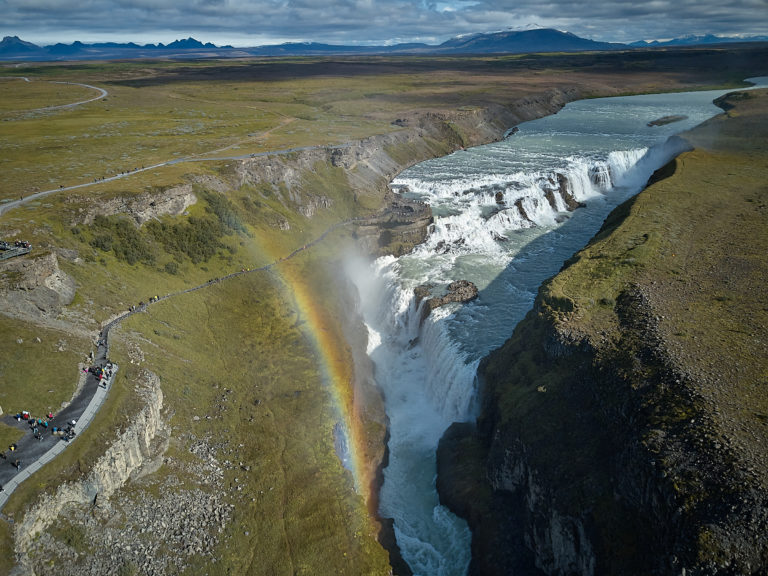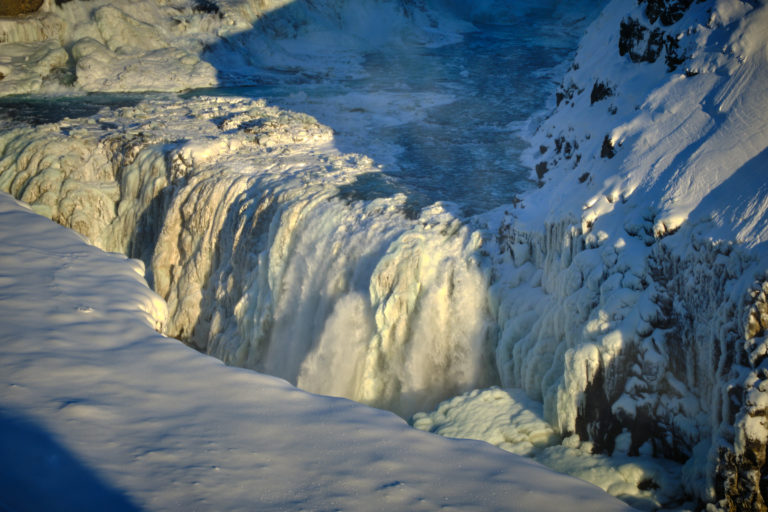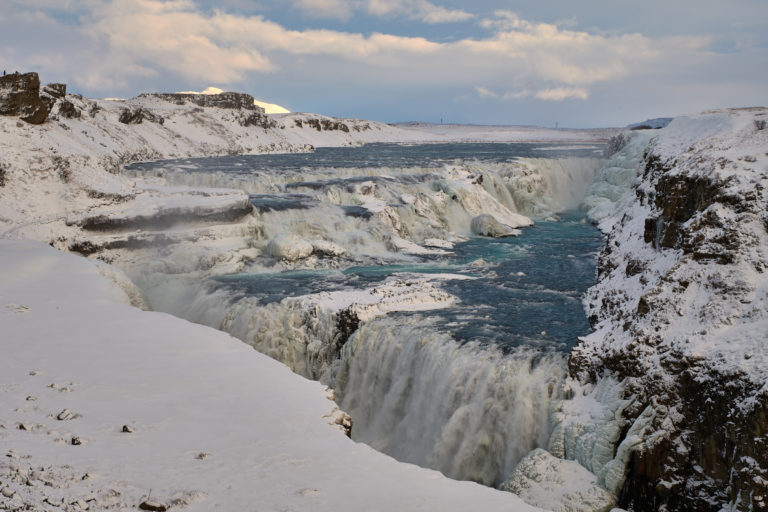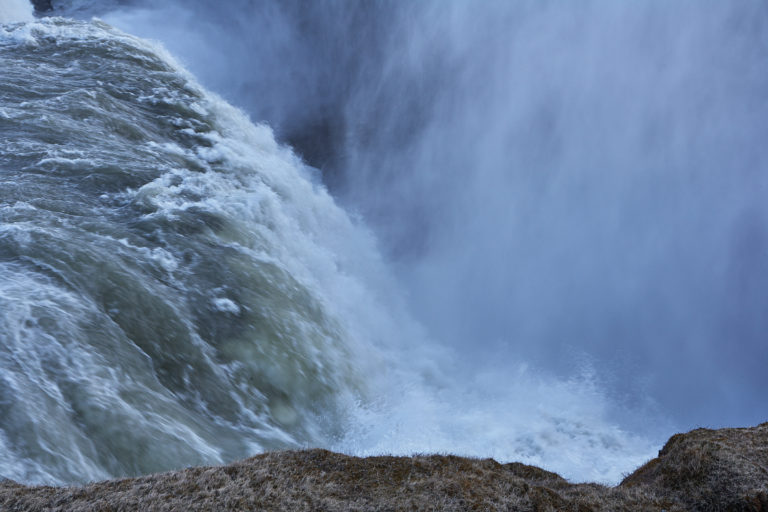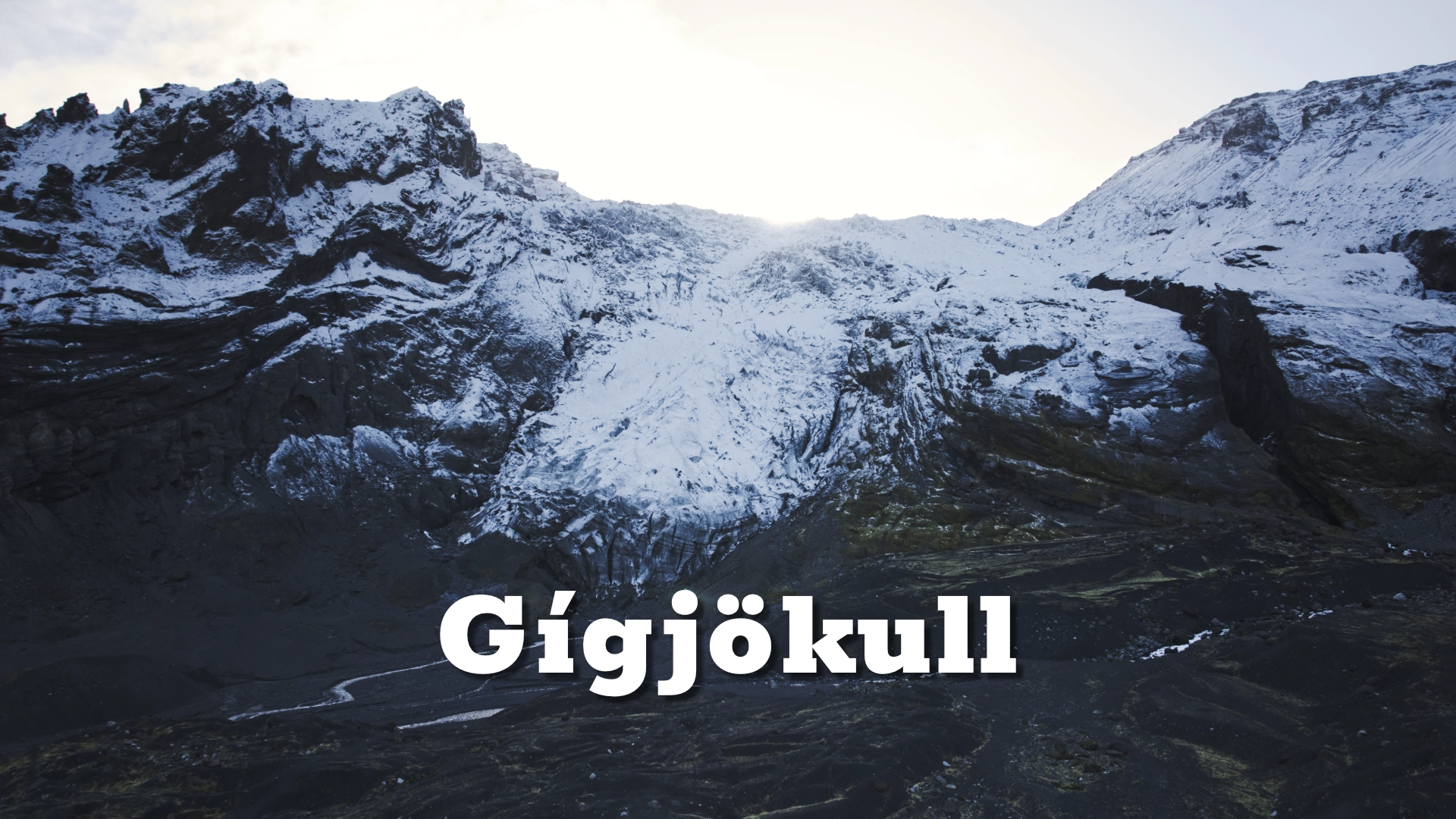
Gullfoss plunges in two dramatic stages, the first cascade drops 11 meters and the second drops 22 meters as it flows through the rugged, and at times 70 meters high, canyon of Hvítá river.
The location of Gullfoss waterfall on the Golden circle in Iceland
Latitude
N64° 19' 38.220"
Longitude
W20° 7' 8.135"
Gullfoss waterfall on the Golden circle in Iceland
Gullfoss waterfall is in the river Hvítá. It has its origin in Langjökul glacier, the second largest glacier in Iceland, .
Meltwater from the highlands, drips through the lava fields and into the canyon of Hvítá. At Gullfoss, the river drops down two stories, 33 m in height, creating a magical scene called the Golden waterfall.
Gullfoss falls in two steps. The first one 11 meter and the second one 21 meter and into the canyon that is 20 m wide and about 2,5 km long.
In the early 20th century, Icelanders had a large discussion whether to use the power of the waterfall to produce hydroelectricity, or to protect the waterfall and the nature surrounding it.
Sigríður Tómasdóttir, from the farm Brattholt, fought passionately for the preservation of the waterfall. Nothing could stop her from protesting the demolition of the waterfall.
Walking back and forth between Reykjavík and Brattholt, she waded through rivers and snow, in her effort to save nature.
She met with the president and government officials, where she declared that she would throw herself into the waterfall should it be demolished to build a power plant.
Sigríður’s adopted son acquired Gullfoss waterfall in 1940 and later sold it to the Icelandic government. As environmental protection became more widely discussed in Iceland, Sigríður was increasingly recognized as Iceland’s first environmentalist.
In 1978, a memorial stone was erected in her honor at Gullfoss, and a year later the waterfall and its surroundings were designated as a nature reserve.
Interesting facts:
Hight in total 33m. Number of falls: 2. Highest fall: 21m. River: Hvítá River. Average water flow: 140m3/s
The Locomotive Elite
What do Donald Trump and Iceland’s Locomotive Elite have in common?
Far more than you think.
In The Locomotive Elite, you’ll uncover how a tiny clique in Iceland captured extensive control—of banks, courts, media, and even the central bank.
For decades they ruled, first democratically, then through corruption and in the end through crime, enriching themselves and their cronies while dismantling oversight.
The result?
One of the most spectacular financial collapses in modern history.
